Perfect Perennials and Planting For Health
Perfect Perennials and Planting For Health
Flowers to Grow for Happiness and Health
It’s an exciting time of year in the perennial section of the garden center. As the shipment of plants roll in, I see many that are old friends, as well as new varieties that I’m anxious to grow. I know that I can replace plants that didn’t make it though last winter’s arctic plunge (lavender!) and fill in empty spaces in the perennial garden. And I also know that along with the flowers that make me happy, working in the dirt is good for my health. Check out the graphic at the end of this post for more information about gardens and wellness.
Here are some perennials that do well in this area, and some the information you need to grow them.
Creeping Phlox (Phlox subulata)
This perennial is a colorful carpet of flowers in the early spring. It’s a great plant for sunny slopes because it’s drought tolerant and doesn’t allow weeds to invade the area where it’s flourishing. Plant creeping phlox in well-drained soils and only water it once a week in times of drought…getting hit frequently with irrigation is the kiss of death for this plant. Insider Information: This is the time of year to buy this plant. It’s seldom available later in the summer, so if you have always wanted to grow this beautiful spring perennial, purchase it in April.
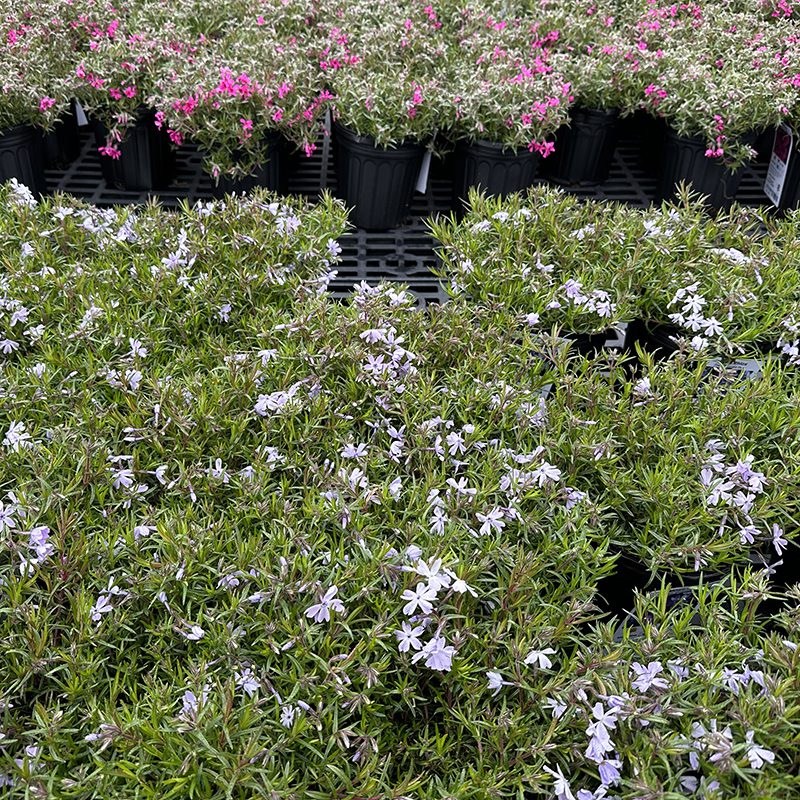
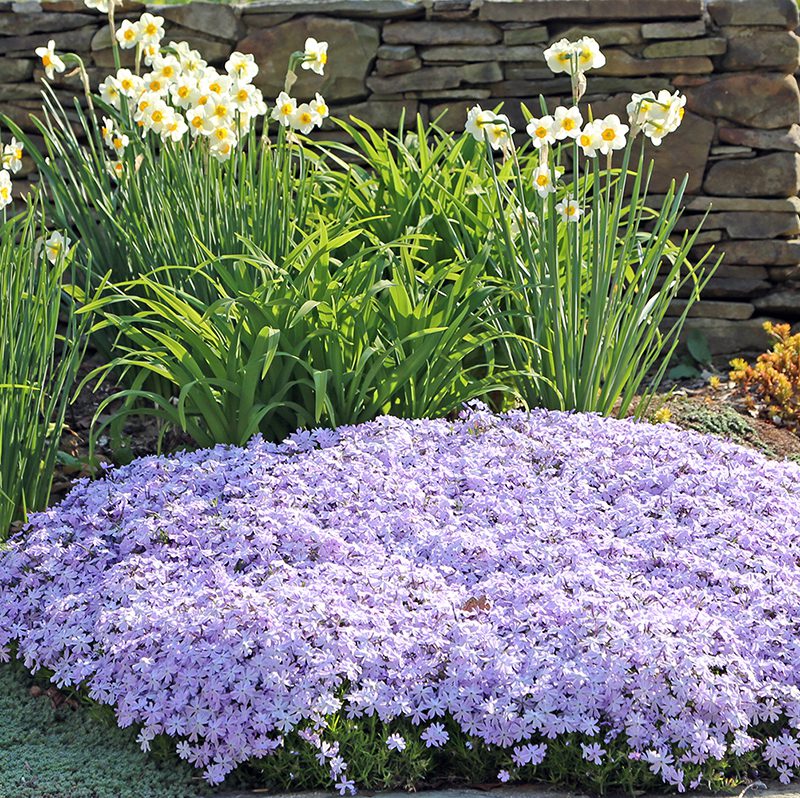
Basket of Gold (Aurinia saxatilis)
One of my favorite spring-flowering perennials is basket of gold. Aurinia is not only in brilliant bloom at a time of year when we need color the most, but the gray-green foliage is attractive the rest of the summer. This is also a perennial that will self-seed in places where it’s happy, so it’s the perfect plant for kitting a perennial garden together or for filling in cracks and spaces along a path. Insider Information: basket of gold prefers good drainage and likes heat. It will thrive in rock walkways, next to a brick patio, and even in the spaces in stone walls.
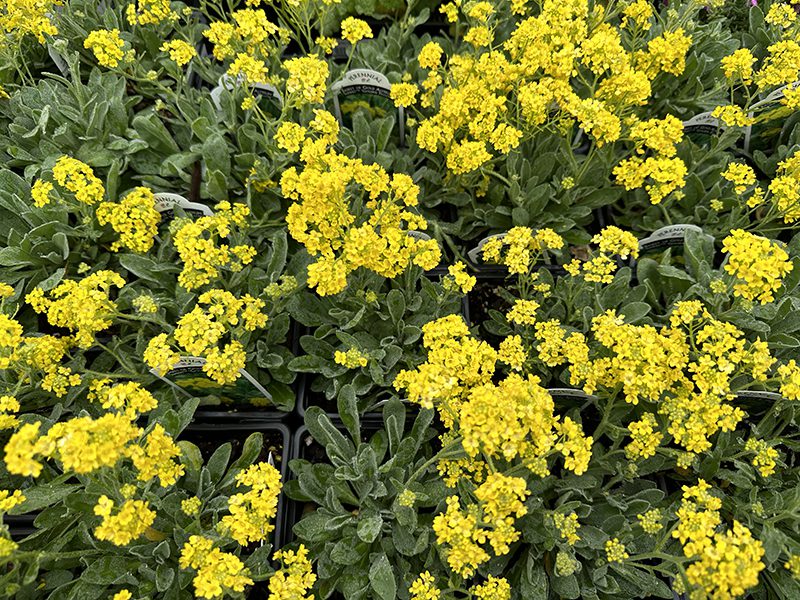
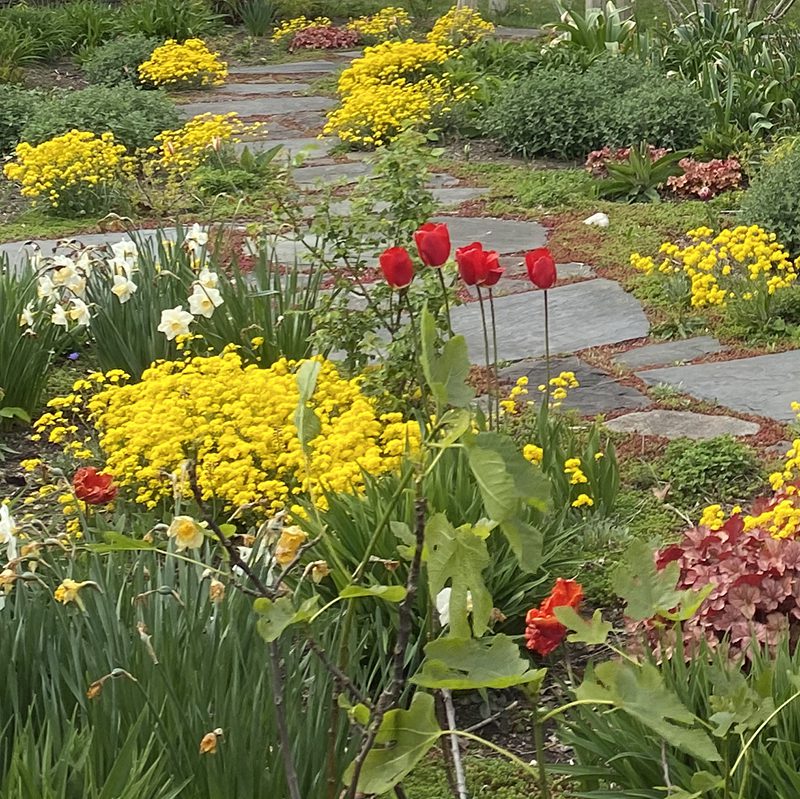
White Thyme
A good companion plant for creeping phlox and basket of gold is white Thyme. This ground cover herb grows quickly and flowers in early summer, after the phlox and Aurinia are finished blooming. And like those two perennials, this Thyme is drought tolerant and loves sun. Insider Information: At this time of year we have many varieties of Thyme in the perennial section, in smaller pots, making the planting of rock gardens and slopes more affordable. For a drought-tolerant garden, add fall-blooming sedums with various thymes, basket of gold and creeping phlox.
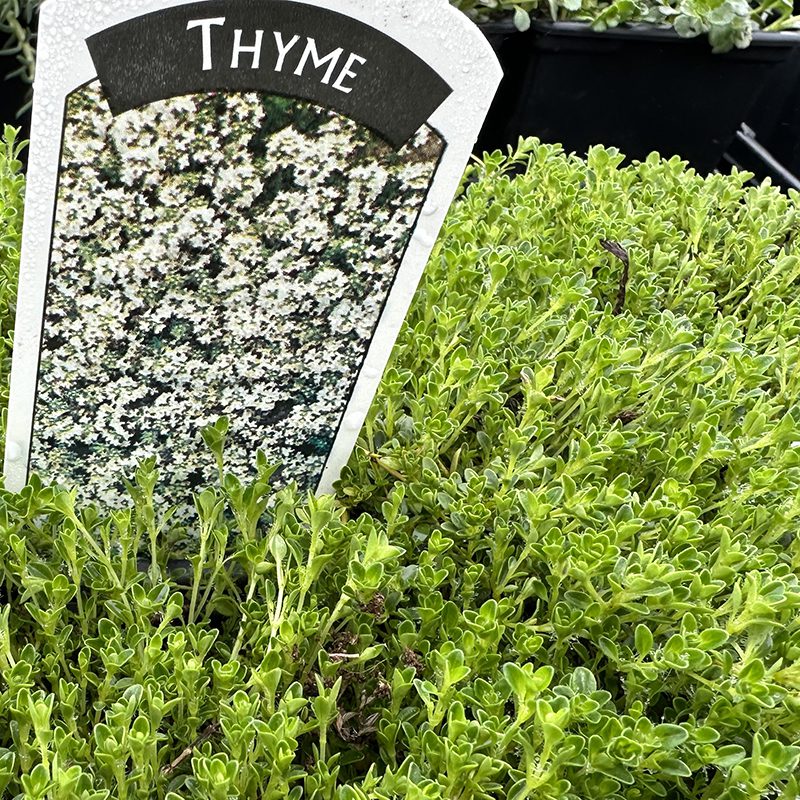
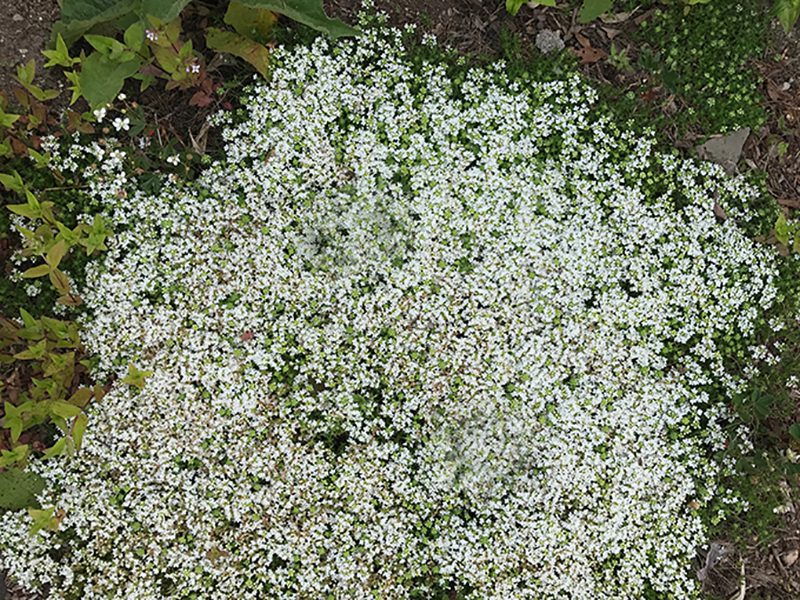
Catmint (Nepeta varieties)
One of the must-grow perennials for sunny gardens is catmint. This is not catnip, although cats can go a little nuts about Nepeta as well. From the beautiful, blue flowers in May and June to the pretty foliage and sporadic blooms the rest of the summer, Nepeta is a workhorse in the perennial garden. Bees love this plant, and it can be a good one to place near a vegetable garden to attract pollinators. Insider Information: In early July you can leave the catmint alone as it is, shear it into a ball, or cut the finished flower stems right to the ground. With any of these treatments the plant will produce some small, bee-pleasing flowers through the summer.
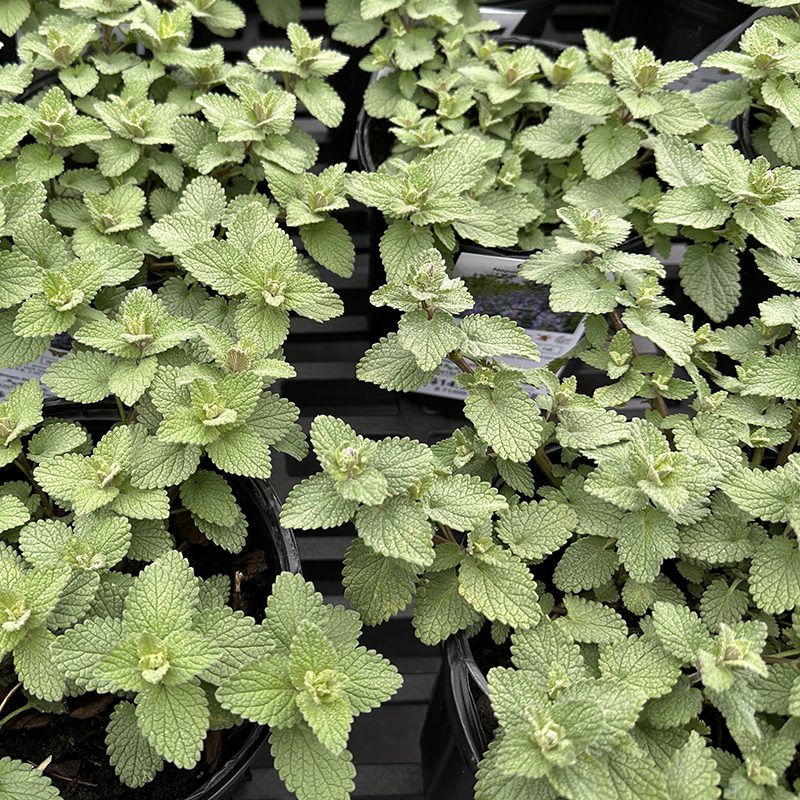
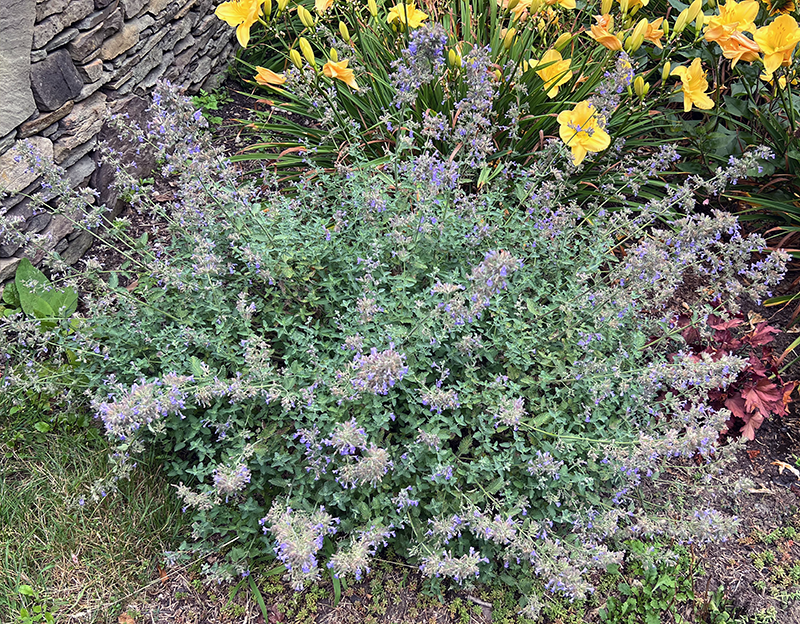
Cardinal Flower (Lobelia cardinalis)
It can be hard to find shade perennials that have showy flowers in the summertime. So many shade-tolerant plants bloom in the spring. If your shade garden tends to be shades-of-green in the summer, you need the cardinal flower to make your landscape come alive. This native perennial attracts hummingbirds as well, and it will self-seed around the garden, playing well with Hosta and ferns. Insider Information: Take a photo of the young foliage when you put this plant in the garden so you’ll remember what a new plant looks like. Then you will be able to recognize the self-seeded plants that are sure to come in future years, and you won’t think that they are weeds.
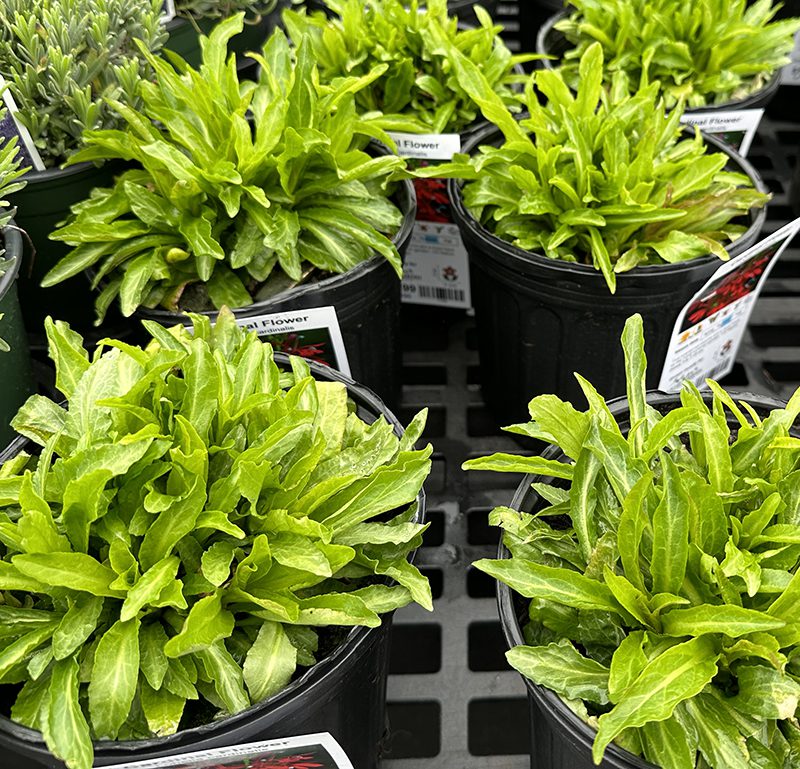
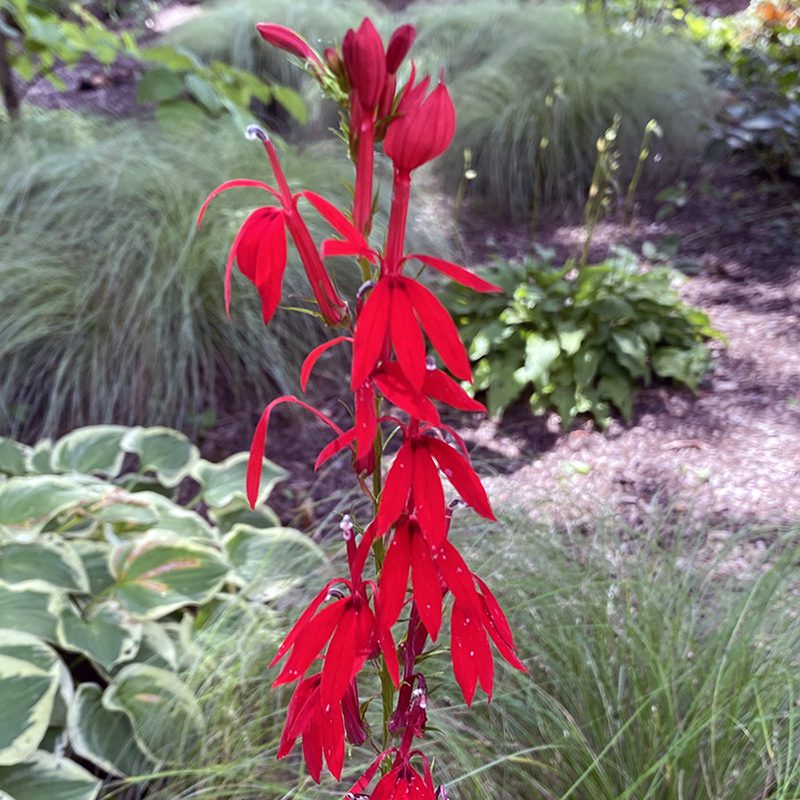
Lavender (Lavandula varieties)
Many people on Cape Cod lost lavender plants last winter, along with roses, heath and heather and butterfly bush. The sudden plunge in temperature in early February killed these along with crape myrtle and the flower buds on our blue hydrangeas. (Sob!) Fortunately, there are many wonderful varieties of lavender in stock so dead plants can be replaced and your garden will be filled with fragrance and color in mid-summer. Insider Information: Lavender loves heat, so plant yours near a walkway or next to a white birdbath or other heat-reflecting structure. Shear your lavender immediately after it finishes flowering…or shear it when the flowers are at their peak and bundle the stems into fragrant, dried flower bouquets. Shearing the plants after flowering keeps them full and bushy for years. Finally, know that this plant doesn’t like to be hit with irrigation on a frequent basis; water deeply less often.
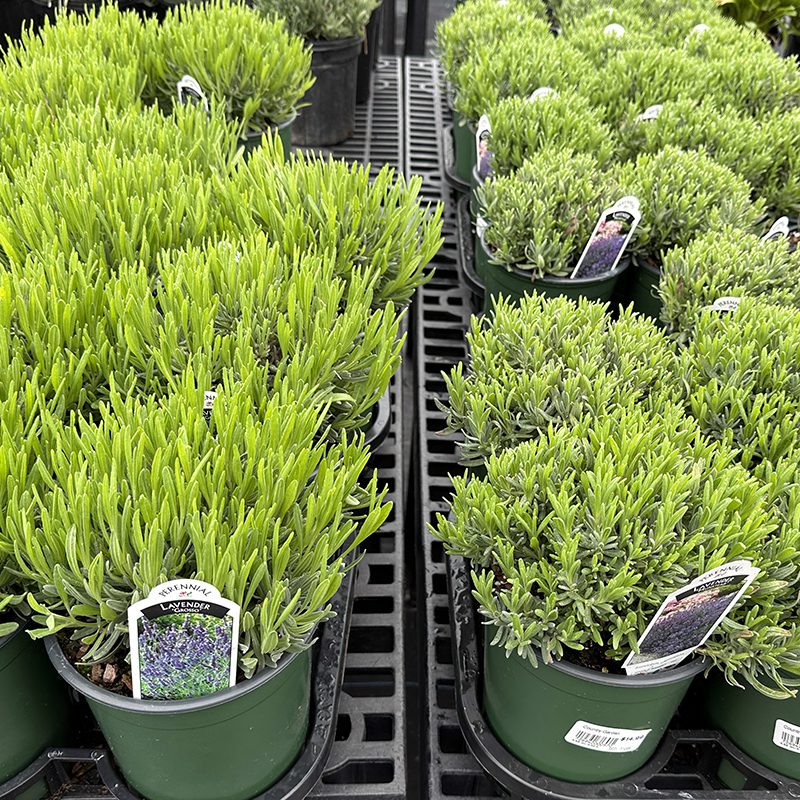
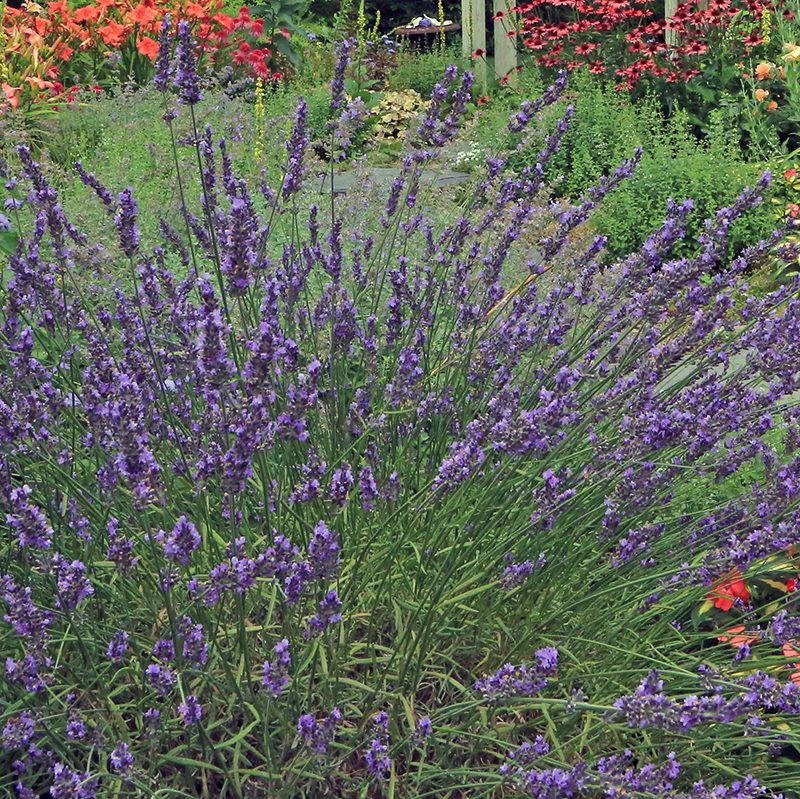
Growing Good Health? #PlantsDoThat
There are so many studies that show that working in a garden is good for our wellbeing. From the friendly microorganisms that assist us to have healthy immune systems to benefits of exercise and breathing fresh air, working in the garden promotes wellness. This NICH graphic speaks to just some of the research that shows that when it comes to good health, #PlantsDoThat.
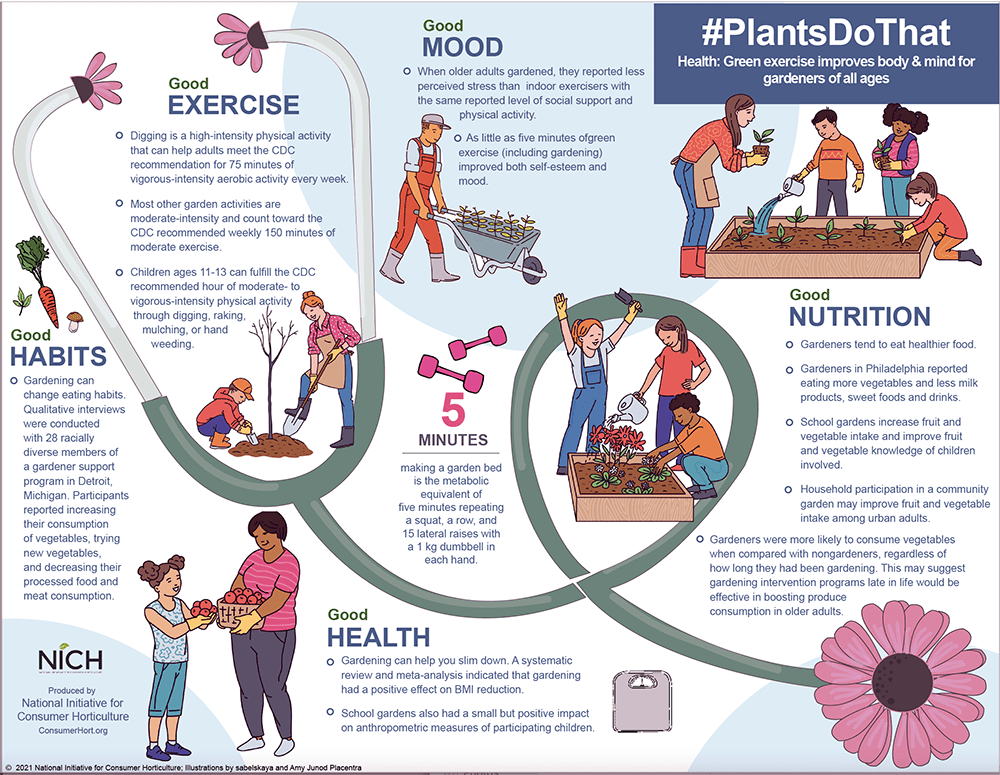
Subscribe To Our Newsletter
Sign up for our weekly email about sales and events.
